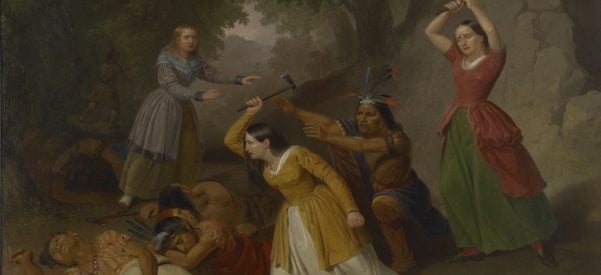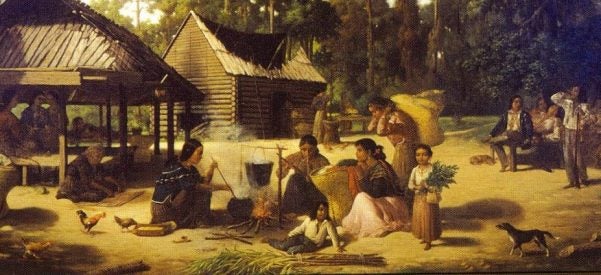Why an American Woman Who Killed Indians Became Memorialized as the First Female Public Statue
Hannah Duston Was Used as a National Symbol of Innocence, Valor, and Patriotism to Justify Westward Expansion
On a small island north of Concord, New Hampshire, stands a 25-foot-tall granite statue of Hannah Duston, an English colonist taken captive by Native Americans in 1697, during King William’s War. Erected in 1874, the statue bears close resemblance to contemporary depictions of Columbia, the popular “goddess of liberty” and female allegorical symbol of the nation, except for what she holds in her hands: in one, a tomahawk; in the other, a fistful of human scalps.
Though she’s all but forgotten …



